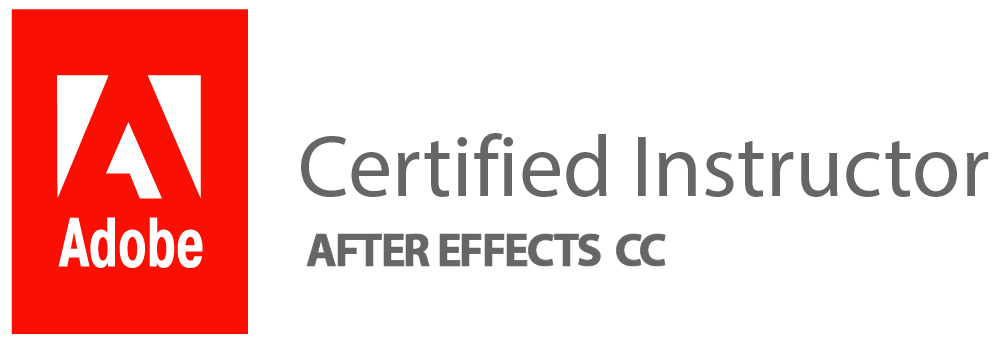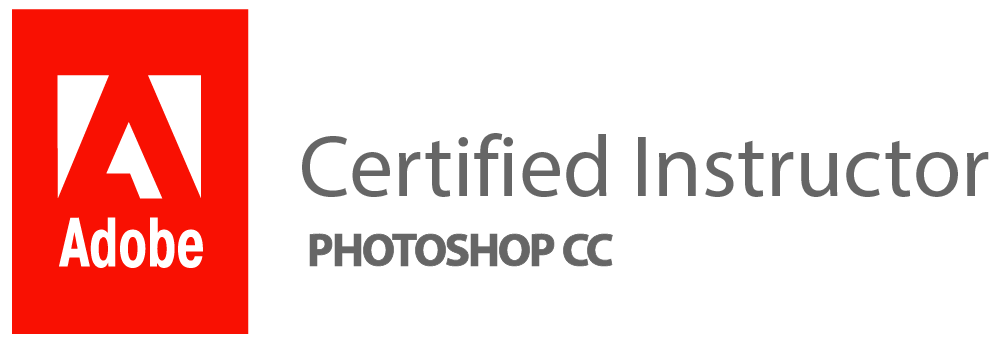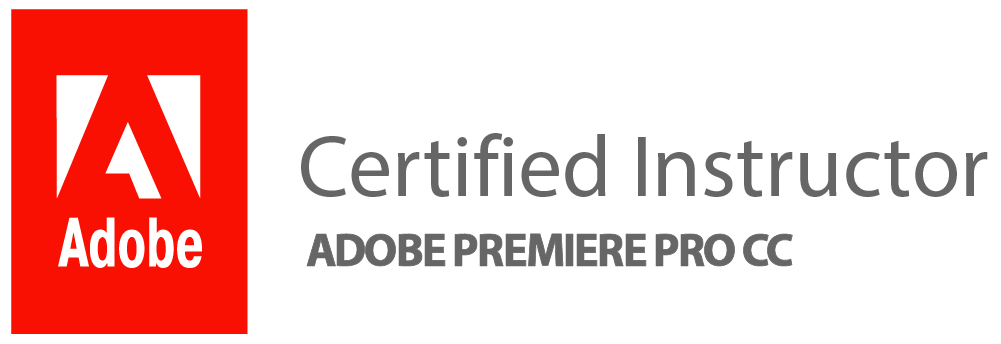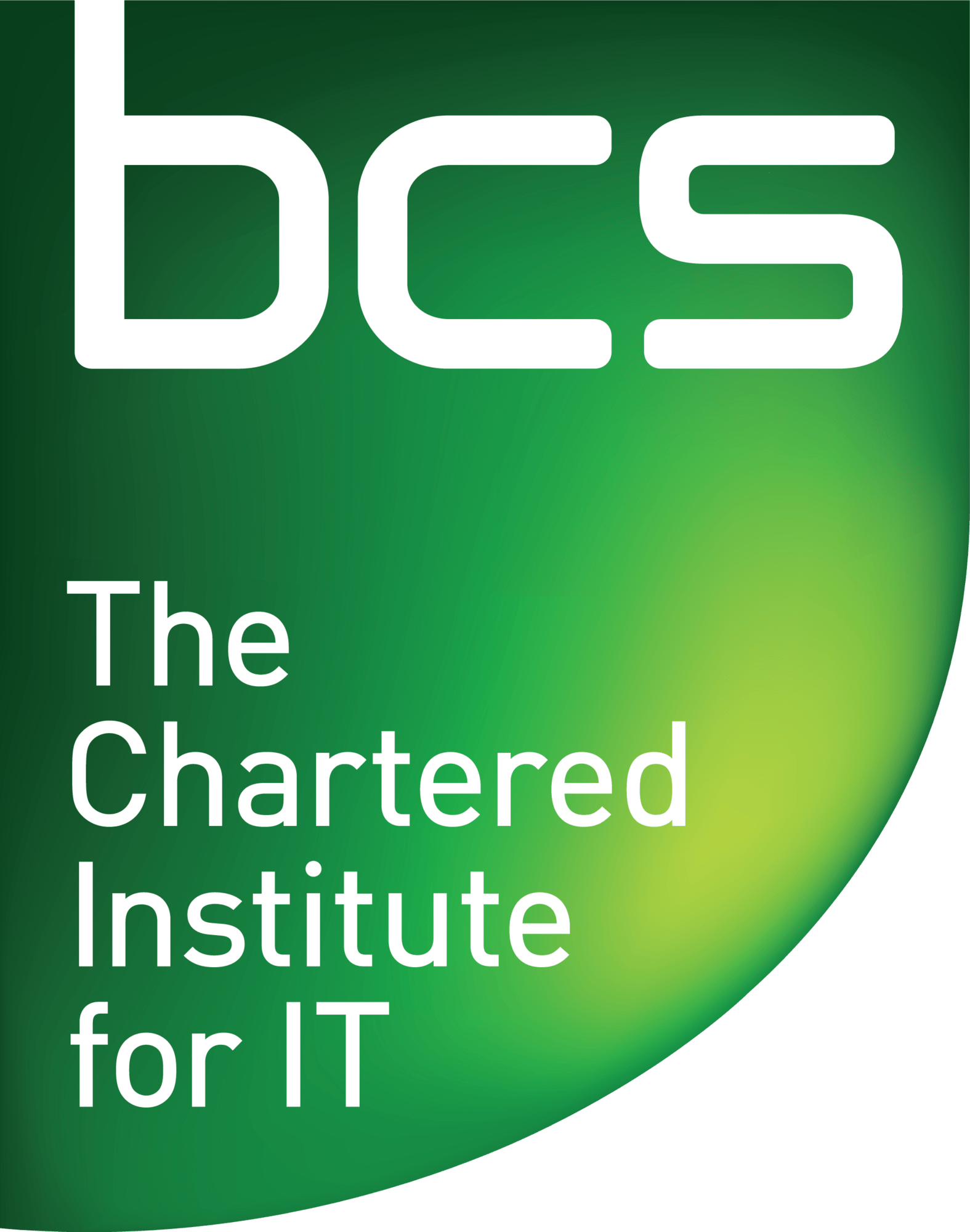What Does A Typical Graphic Design Class For Teenagers Involve?
In a graphic design course, students study various aspects of visual communication. This includes topics such as typography, colour theory, layout and composition, branding and identity design, digital illustration techniques, and user experience design. They also learn about the history of graphic design and its evolution over time.
Students are taught how to use software such as Adobe Photoshop, Illustrator, InDesign or Sketch to create digital designs. They develop skills in creating logos, posters, brochures and other marketing materials that communicate messages effectively. Additionally, they learn how to work with clients to understand their needs and create designs that meet their requirements.
Overall a graphic design course teaches students how to think creatively while making strategic decisions. It provides them with the skills necessary for a successful career in graphic design or related fields like advertising or marketing.
Basic Design Principles
In a graphic design course, one of the most fundamental topics covered is basic design principles. These principles are essential for every designer to understand and implement effectively. The basic design principles include unity, balance, contrast, hierarchy, proportion, and space. Unity refers to how all the elements in a design work together to create a cohesive whole.
Balance deals with the distribution of visual weight in a composition. Contrast highlights differences between elements and makes them stand out from each other. Hierarchy determines the order of importance among different elements in a composition. Proportion involves the relationship between different parts of an object or element within a composition. Finally, space refers to the area surrounding objects within a design and how it affects their impact on viewers.
Designers must have a thorough understanding of these basic design principles before they can create effective designs that communicate their intended message clearly and concisely. By mastering these principles and incorporating them into their work, designers can create visually appealing designs that convey information effectively while also being aesthetically pleasing to look at. Ultimately, basic design principles form the foundation for any successful graphic designer’s career path as they continue to grow and evolve with new technologies and trends within this ever-changing field of study.
Typography & Layouts
One of the essential things that you will learn in a graphic design course is typography. Typography refers to the art and technique of arranging typefaces in a visually appealing way. It includes selecting fonts, spacing, size, and colour to create an effective visual message. You will learn about different typefaces and their applications for various design projects such as logos, posters, and websites.
Another crucial aspect of graphic design that you will study is layouts. Layouts refer to the arrangement of elements on a page or canvas to create a harmonious composition. In a graphic design course, you will gain knowledge about grid systems, alignment techniques, and white spaces to create balanced layouts for your designs. You will also learn how to use hierarchy to guide viewers’ attention towards important information on the page.
Overall, typography and layouts are two critical elements of graphic design that every designer should know. With proper skills in typography and layouts, you can communicate your message effectively while creating aesthetically pleasing designs that capture your audience’s attention at first glance.
Colour Theory & Psychology
In a graphic design course, one of the essential topics covered is colour theory and psychology. Understanding the impact of colours on human emotions and behaviour is crucial for creating effective designs that communicate the intended message. The colour theory explains how different hues, shades, and combinations affect our perception of images.
The psychological aspect of colour explores how people react to specific colours in different contexts. For example, red is often associated with passion, warmth, and excitement. Still, it can also signify danger or anger, depending on how it’s used. Blue is commonly linked with trustworthiness and calmness but can also convey sadness or depression if overused.
By incorporating colour psychology into their designs, graphic designers can create visual communication that resonates with their audience on an emotional level. They can use colours to evoke certain moods or feelings while also ensuring that their designs are visually appealing and easy to understand at first glance. With a thorough understanding of colour theory and psychology, designers can craft effective visual communication that leaves a lasting impression on viewers.
Digital Tools & Software
In a graphic design course, students learn about different digital tools and software that are used in the industry. The most popular software for graphic design is Adobe Creative Suite. This includes programs like Photoshop, Illustrator, InDesign, and more. Students will become familiar with the features and functions of each program, as well as how to use them effectively to create professional designs.
Other digital tools that may be covered in a graphic design course include typography software like FontLab Studio or Glyphs. These programs allow designers to create custom fonts or modify existing ones. Additionally, students may learn about prototyping tools such as Sketch or Figma, which are used to create interactive designs for websites or mobile apps.
Overall, studying digital tools and software is an essential part of graphic design education. Understanding how these technologies work and being proficient in their use can make all the difference when it comes to creating successful designs that communicate effectively with audiences.
Specializations in Graphic Design
One of the most exciting aspects of studying graphic design is the opportunity to specialize in a particular area. While foundational skills such as typography, colour theory, and composition are essential for any designer, specializations allow students to dive deeper into specific design practices. One popular specialization is branding and identity design. This involves creating visual systems that represent a company or organization, including logos, packaging, and marketing materials.
Another specialization within graphic design is user experience (UX) design. This area focuses on designing digital products, such as websites and mobile apps, that are intuitive and easy for users to navigate. UX designers conduct research on target audiences and create wireframes and prototypes to test different designs before finalizing the product.
Lastly, illustration is another popular specialization within graphic design. This involves creating original artwork for various mediums such as books, magazines, advertisements or animations. Illustrators use their creativity to visually communicate ideas through drawings or computer graphics while maintaining a consistent style throughout their work.
Conclusion: Importance of Graphic Design in the Modern World
In today’s digital age, graphic design has become a crucial element in the business world. It plays a significant role in communicating a brand’s message and creating an impact on potential customers. A skilled graphic designer can effectively incorporate typography, colour theory, and layout to make designs that convey emotions and ideas.
A Graphic Design course aims to equip students with the necessary skills to create visual communication designs that are effective across different platforms. Students learn about design principles such as balance, contrast, and hierarchy. They also gain knowledge of software tools like Adobe Photoshop, Illustrator, and InDesign that help bring their creative vision to life.
The importance of graphic design cannot be overstated in today’s world. With the rise of social media platforms and websites where businesses interact with their clients online, it is essential for companies to have well-designed marketing materials that capture attention in an instant. Therefore investing time and resources into hiring or training skilled graphic designers is crucial for any business looking to thrive in this modern era.
What Will You Study At Our Graphic Design School?
In a graphic design course, you can expect to study a variety of topics that are essential for success in the field. One of the main areas you’ll focus on is design principles, including colour theory, typography, and layout. You’ll learn how to use these principles effectively to create visually appealing designs that communicate your message or brand.
Another important aspect of a graphic design course is software skills. You’ll become proficient in programs like Adobe Photoshop, Illustrator, and InDesign, which are commonly used in the industry. These tools allow you to bring your designs to life and make them ready for print or digital use.
Finally, you can also expect to study branding and marketing concepts as they relate to graphic design. Understanding how businesses develop their brands and market their products or services is crucial for creating effective designs that resonate with audiences. By studying these topics at our graphic design school, you’ll be well-equipped for success in this dynamic and creative field.
Design Thinking
In a graphic design course, one of the most important concepts that students learn is Design Thinking. This approach involves identifying and solving problems creatively by putting the user at the centre of the design process. It involves empathizing with users to understand their needs and challenges, defining the problem to be solved, ideating potential solutions, prototyping and testing them, and then iterating to improve on the design.
Design Thinking is a crucial skill for graphic designers because it enables them to create visually appealing designs that are also functional and effective. Students learn how to use various tools such as mind maps, empathy maps, personas, storyboards, wireframes and prototypes in order to develop an effective solution. By learning how to think critically about design problems from a user-centred perspective rather than just focusing on aesthetics alone, students become more skilled at applying their creativity in practical ways.
Another important aspect of Design Thinking is collaboration. Students are taught how to work effectively in teams by sharing ideas and perspectives while also being receptive to feedback from others. This collaborative approach helps foster innovation as well as prepares students for real-world projects where they will need to collaborate with other professionals like copywriters or developers.
Graphic Design Rules
In a graphic design course, one of the most important things that you will learn is the rules of graphic design. These rules have been developed over time, and they serve as a guide for designers to create visually appealing and effective designs. Some of the key graphic design rules include having a clear hierarchy, using contrast effectively, ensuring proper alignment, and maintaining consistency throughout your work.
One important rule in graphic design is to use typography effectively. This includes selecting appropriate fonts for different types of text and making sure that the text is easy to read. Another key rule is to keep your designs simple and avoid cluttering them with too many elements or information. By following these basic graphic design rules, you can create professional-looking designs that effectively communicate your message to your audience.
How Do You Start A Design Concept?
In a graphic design course, one of the fundamental skills that students learn is how to start a design concept. There are various approaches to starting a design concept, but most of them require an understanding of the client’s needs and preferences. One way is to gather information about the client’s brand identity, target audience, and objectives.
Once you have gathered this information, you can begin brainstorming ideas for your design concept. This stage involves sketching out rough ideas on paper or using digital tools such as Adobe Photoshop or Illustrator. The goal is to explore different directions for your design concept and refine your ideas based on feedback from peers or clients.
After identifying the key elements that will form part of your design concept, it’s important to create mockups or prototypes. This stage allows you to see how different elements work together and make any necessary adjustments before presenting the final product to clients. Ultimately, starting a design concept requires creativity, research skills, attention to detail, and effective communication with clients throughout the process.
Composition, Hierarchy, Colour Theory, Ideas
In a graphic design course, you will learn about the fundamental principles of composition. This includes understanding how to arrange elements on a page to create balance and harmony. You will also study hierarchy, which involves organizing information in a way that guides the viewer’s eye from most important to least important.
Colour theory is another key topic you’ll cover in a graphic design course. This includes learning about colour palettes, colour schemes, and how different colours can evoke different emotions or reactions. You’ll also study the psychology of colour and how it can be used to convey specific messages or meanings.
Lastly, generating ideas is an essential part of any creative process, including graphic design. You will learn techniques for brainstorming and ideation, as well as strategies for refining and developing your ideas into cohesive designs that effectively communicate your message. Understanding these four topics – composition, hierarchy, colour theory and idea generation – is critical when studying graphic design.
Thinking Outside The Box
Graphic design courses are designed to teach students how to think outside the box and come up with creative designs. Students learn about typography, colour theory, composition, layout design, and other essential skills that a graphic designer needs to create stunning visuals. The courses help students develop their problem-solving skills and think critically about design challenges.
In a graphic design course, students also learn about software like Adobe Photoshop, Illustrator, and InDesign. They get hands-on experience in using these tools for creating digital artwork. Moreover, they learn how to work with different file formats and prepare their designs for print or web publication.
Thinking outside the box is an essential skill for a successful graphic designer. It allows them to create unique designs that stand out from the crowd. Graphic design courses provide students with the necessary knowledge and practical skills required to do this effectively and efficiently. By exploring new ideas and pushing the boundaries of traditional design principles, graphic designers can achieve great results in their work.
UX UI (User Experience & User Interface)
In a graphic design course, you will learn about the principles and elements of design that are essential in creating visually appealing designs. The course will teach you how to use various design software such as Adobe Photoshop, Illustrator, and InDesign. You will also learn about typography and layout design which are important in creating effective communication through visual media.
One crucial aspect of graphic design is user experience (UX) and user interface (UI) design. UX refers to the overall experience a user has while interacting with a product or service, while UI focuses on the visual aspects of the product, such as colours, fonts, buttons, etc. UX/UI designers aim to create products that are easy to use and visually appealing to users.
By learning about UX/UI design in a graphic design course, students can apply their knowledge to create effective designs for websites, mobile apps or any digital platform. A good UX/UI designer should have an understanding of human behaviour when using digital platforms so that they can create seamless experiences for users that keep them engaged with their products or services.
Adobe Photoshop & Adobe Illustrator & Adobe Indesign
In a graphic design course, students are typically introduced to industry-standard software programs such as Adobe Photoshop, Adobe Illustrator, and Adobe InDesign. These three programs are essential tools for any graphic designer looking to create visually stunning designs.
Adobe Photoshop is primarily used for editing and manipulating photos or images. It allows designers to adjust colour tones, remove or add objects from an image, and enhance or retouch photographs. Adobe Illustrator is used mainly for creating vector graphics such as logos, icons, and illustrations that can be scaled without losing quality. Its powerful drawing tools enable designers to create intricate artwork with ease.
Lastly, Adobe InDesign is used for layout design of publications such as magazines, brochures, books etc. Its versatile page layout tools allow designers to combine text and graphics in a way that is aesthetically pleasing while maintaining readability. Overall knowledge of these three programs plays an integral role in the success of any graphic designer’s career path by providing them with the necessary skills needed to compete in the industry today.
Build Websites: Figma, WordPress, Elementor.
In a graphic design course, students learn various software and tools that help in building visually appealing designs. Figma is one such tool which is becoming increasingly popular for its collaborative features and ease of use. It allows designers to create wireframes, prototypes and high-fidelity designs all in one place. With its vector editing capabilities, it’s easy to make changes on the go without compromising the quality of the design.
WordPress, on the other hand, is a content management system (CMS) that enables users to build websites with ease. It has thousands of templates available that can be customized according to individual needs. Its plugin ecosystem provides additional functionality like SEO optimization and e-commerce capabilities.
Elementor is a page builder for WordPress that provides drag-and-drop functionality for creating custom layouts without needing any coding knowledge. It has pre-built templates available as well as a library of widgets which can be easily added to pages or posts. Overall, these three tools are essential for anyone who wants to build beautiful websites without needing extensive technical skills.
High Demand
One of the primary reasons why graphic design courses are in high demand is because they equip students with a diverse set of skills that are applicable across a range of industries. From creating logos and branding to designing user interfaces, graphic designers play an integral role in shaping the visual identity and communication strategy of companies. As such, there is a growing need for professionals who can navigate digital platforms and leverage technology to create visually engaging content.
Moreover, the rise of e-commerce and social media has led to an increased demand for graphic designers who can create compelling visuals that drive engagement and sales. Whether it’s designing an eye-catching banner ad or creating striking product images, businesses require skilled designers who can understand their target audience and craft visuals that resonate with them. As such, there is no shortage of opportunities for graduates who have honed their creative abilities through a comprehensive graphic design course.
Overall, the high demand for graphic design courses reflects the growing importance of visual communication in today’s digital landscape. By equipping students with the technical skills, industry knowledge, and creativity needed to succeed in this field, these courses provide a gateway to exciting career opportunities across various sectors.
Multimedia
In a graphic design course, multimedia is an essential topic that students have to cover. Multimedia includes the use of different types of media, such as text, images, audio, and video, to produce engaging content. Students learn how to create multimedia designs for various platforms, such as websites and social media.
Multimedia design involves using software tools such as Adobe Photoshop, Illustrator, InDesign, After Effects and Premiere Pro. These tools allow designers to combine texts and images creatively while ensuring that they communicate effectively with their target audience. Additionally, students will also learn about animation techniques like 2D/3D model creation and manipulation.
Overall, multimedia plays a crucial role in the world of Graphic Design because it helps designers bring their creative ideas to life by incorporating pictures or videos into their designs. Understanding how each element contributes to the message being communicated can help designers create compelling visuals that capture the attention of viewers with ease.
Motion Graphics & After Effects
Motion graphics and After Effects are two important components of a graphic design course. Motion graphics is the art of combining visual elements like text, images, and animations to create engaging content. It involves creating moving graphics that can be used in movies, television shows, advertisements, video games, and other digital platforms.
On the other hand, After Effects is a software program that enables designers to create motion graphics and visual effects for film, video, and multimedia projects. This tool provides various features such as compositing tools to combine different visual elements into one image or scene; animation tools to create keyframe-based animations; 3D tools for creating 3D objects and environments; and much more.
In a graphic design course, students learn how to use these tools effectively by developing skills in motion graphics creation and manipulation using Adobe After Effects. They will also be taught how to integrate motion graphics with other design elements like typography and illustrations. Students will explore various techniques, including camera movements, transitions between shots or scenes, and special effects like particle systems or explosions to enhance their work’s impact.
Digital Illustrations
One of the most exciting and popular aspects of studying graphic design is the opportunity to learn digital illustration. Digital illustrations allow designers to create stunning, realistic images using software like Adobe Illustrator or Procreate. In a graphic design course, students will typically begin by learning the basics of digital illustration techniques such as line work, shading, and perspective.
As they progress in their studies, students will have the opportunity to experiment with different styles and mediums within digital illustration. This could include everything from creating vector graphics for logos and branding materials to designing intricate illustrations for magazine layouts or children’s books. In addition to technical skills, students will also learn about composition, colour theory, and storytelling through their digital illustrations.
Overall, digital illustration is an essential part of any graphic design curriculum because it allows students to bring their artistic visions to life in a way that is both practical and visually striking. By mastering these skills early on in their education, future designers will be able to excel in a variety of careers, including advertising, publishing, animation and more.
Why Is A Graphic Designer Portfolio Important?
In a graphic design course, students learn various skills and techniques that are essential in building an impressive portfolio. These skills include typography, colour theory, layout design, branding, illustration, and digital software proficiency. Through classroom projects and assignments, students can showcase their creativity and problem-solving abilities while building a diverse range of work to display in their portfolios.
A graphic designer’s portfolio is important because it serves as the primary tool for showcasing one’s abilities and experience to potential employers or clients. A strong portfolio demonstrates a designer’s understanding of design principles and their ability to apply them creatively to solve real-world problems. Moreover, it provides evidence of a designer’s versatility by showcasing various projects across different mediums, such as print or digital formats.
In conclusion, having a well-curated graphic design portfolio is crucial for professionals looking to succeed in the competitive industry. It not only showcases the breadth of one’s capabilities but also serves as a reflection of personal style and aesthetic preferences. Thus investing time into creating an outstanding collection of work can lead to career opportunities that may not have been possible otherwise.
Branding
Branding is a crucial aspect of graphic design. In a graphic design course, students are taught the importance of creating a brand identity that effectively communicates the values and personality of a company or product. This involves creating visual elements such as logos, typography, colour schemes, and packaging that are consistent across all marketing materials.
Students also learn about the psychology behind branding and how to use it to influence consumer behaviour. They study market research to understand target audiences and develop strategies for positioning brands in competitive markets. Additionally, they learn about brand guidelines and how to apply them when designing various marketing materials such as business cards, brochures, websites, social media graphics, and more.
Overall, branding is an essential skill for any aspiring graphic designer as it helps establish credibility, build trust with consumers and create a lasting impression in their minds. By mastering this skillset throughout their education and career journey- designers can help businesses grow by effectively communicating through powerful designs that resonate with their customers on multiple levels- be it emotional or rational.
Graphic Design For Business
In a graphic design course, you will learn the fundamental principles of design, including colour theory, typography, composition, and layout. These skills are essential for creating effective visual communications that engage and inform your target audience.
You will also become familiar with industry-standard software such as Adobe Photoshop, Illustrator, and InDesign. These tools allow designers to create complex designs with precision and efficiency. Additionally, you may learn about web design principles and user experience (UX) design.
Throughout the course, you will have ample opportunities to develop your creative problem-solving skills through various projects and assignments. This includes designing logos, branding materials, packaging designs, advertisements, and more. By the end of the course, you should have a solid understanding of how to create effective visual communications that meet business objectives.
Designing For Social Media
In a graphic design course, students will learn the fundamental principles of design, such as colour theory, typography, composition, and layout. They will also gain knowledge on designing for different mediums, including print and digital platforms. In addition to technical skills, students will develop their creative thinking abilities through various projects and assignments.
One important aspect of modern graphic design is designing for social media. Social media platforms are now an integral part of marketing strategies for businesses and individuals alike. Therefore, it is crucial for designers to understand the unique aspects and requirements of each platform when creating content. Students will learn how to create engaging visuals that capture attention in a crowded social media feed while also adhering to branding guidelines and best practices. By mastering the art of designing for social media, future designers can help their clients stand out in today’s competitive digital landscape.
Design Apps And Websites
In a graphic design course, students typically study various principles and techniques of design, such as colour theory, typography, layout, composition, and branding. They also learn how to use different software tools like Adobe Photoshop, Illustrator, and InDesign to create visual designs for print and digital platforms.
Apart from the technical skills, students are taught about the history and evolution of design as well as its impact on society. They learn how to analyze design trends and patterns while also understanding cultural influences on design.
Overall, a graphic design course aims to equip students with the necessary skills to conceptualize ideas visually while creating effective designs that communicate their intended message. With these skills in hand, designers can easily create stunning websites and apps that not only look good but serve their purpose effectively.
Study Visual Communication
In a graphic design course, one of the main areas of study is visual communication. This includes understanding how to visually convey a message or idea through the use of typography, colour, images, and layout. Students learn about the principles and elements of design and how they can be used to create effective visual communication.
Visual communication is an important aspect of graphic design as it helps designers communicate their ideas and designs to clients and audiences effectively. It also allows them to express complex concepts in a simple way that can be easily understood by anyone. In addition to learning about visual communication theory, students in graphic design courses also learn practical skills such as using software programs like Adobe Illustrator and Photoshop to create designs that effectively communicate their intended message.
Overall, studying visual communication is essential for any student interested in pursuing a career in graphic design. By mastering this skill, students can become successful designers with the ability to craft compelling visuals that tell powerful stories and engage audiences on multiple levels.
Visual Communication UI UX
In a graphic design course, students will learn various aspects related to visual communication and user experience. UI UX, or User Interface/User Experience, is one of the significant subjects covered in the curriculum. It focuses on designing interfaces that are easy to use and provide a seamless experience for users. In this subject, students learn about human-computer interaction, information architecture, wireframing, prototyping, and usability testing.
The purpose of UI UX is to ensure that the users can interact with the interface effectively while achieving their desired goals without any friction. Students will also learn about colour theory, typography, and layout design principles during this course. These concepts are crucial in ensuring that designs are aesthetically pleasing while being functional at the same time. Additionally, they will explore various software tools such as Adobe Photoshop and Illustrator to create visually appealing graphics.
Overall, studying visual communication in UI UX provides students with skills that ensure they create interfaces that meet user needs while delivering an enjoyable experience simultaneously. The skills learned in this subject allow designers to develop websites and applications with high usability ratings leading to happy customers who keep coming back for more!
Visual Communication Vs Graphic Design
In a graphic design course, students are taught various skills and techniques necessary for the field. These include an understanding of typography, layout design, colour theory, composition, and visual hierarchy. Students learn how to use different software programs, such as Adobe Photoshop and Illustrator, to create designs.
While graphic design falls under the umbrella of visual communication, it is not the same thing. Visual communication encompasses a wider range of mediums, such as photography, videography, animation, and even non-digital forms like murals or signage. Graphic design specifically focuses on creating visual content for marketing purposes or other commercial uses.
Ultimately both visual communication and graphic design aim to convey a message through visuals but approach it in different ways. Visual communication is broader and can include various media, while graphic design has a specific focus on designing marketing materials using certain tools and techniques.
Application Building Vs Graphic Design
In a graphic design course, students learn about the principles and elements of design, including colour theory, typography, layout and composition. They also develop skills in software programs such as Adobe Photoshop and Illustrator to create visual designs for print materials such as logos, brochures, and posters. Graphic design courses often require students to complete projects that demonstrate their understanding of these concepts.
On the other hand, application building involves creating functional software programs that can perform specific tasks or solve problems. This process includes developing code using programming languages such as Java or Python and testing the application for bugs and errors. While graphic design is focused on aesthetics and visual communication, application building prioritizes functionality and usability.
Despite their differences in focus, both graphic design and application building are important components of modern technology solutions. In order to create successful products or services, businesses need to consider both aspects – intuitive user interfaces designed with an eye for aesthetics alongside robust applications that deliver real results.
Graphic Design & Marketing
In a graphic design course, you will learn the fundamental principles of design, such as colour theory, typography, composition, and layout. You will also gain proficiency in industry-standard software programs like Adobe Photoshop, Illustrator, and InDesign. These skills are essential for creating various marketing materials like logos, brochures, social media graphics, website layouts, and more.
Moreover, you will study branding strategies and how to apply them to various mediums. You’ll explore the relationship between graphic design and marketing to develop compelling visuals that communicate effectively with your target audience. Understanding marketing techniques is crucial for graphic designers as they play a significant role in shaping brand identity through visual communication. Learning about market research methods and consumer behaviour analysis, along with creative production techniques in designing effective marketing campaigns across all digital platforms, can be achieved.
Work In Graphic Design From Home
In a graphic design course, students learn various skills and techniques to become proficient in creating visual designs. The curriculum typically includes topics such as colour theory, typography, layout design, Adobe software programs (such as Photoshop and Illustrator), digital illustration, branding and identity design, web design, and print production.
Students also learn how to develop their creativity and conceptual thinking while honing their technical skills. They may work on individual projects or collaborate with others on group assignments to simulate real-world scenarios. In addition to coursework, many graphic design programs require students to complete internships or freelancing gigs for hands-on experience.
Overall, a graphic design course provides the necessary foundation for individuals seeking a career in this field. With the rise of remote work opportunities in recent years, more designers are able to turn their passion into a full-time job from the comfort of their homes. Freelancing platforms like Upwork and Fiverr allow designers to find clients around the world while working on their own schedules. However, it’s important for those working from home to maintain discipline and structure in order to meet deadlines and stay productive.
Conclusion:
In conclusion, a graphic design course is an essential program for anyone who wants to pursue a career in the creative industry. The course provides vital skills that enable designers to communicate visually, creatively solve problems and influence emotions through their designs. It equips students with practical knowledge of how to use software such as Adobe Illustrator, Photoshop and InDesign to create visual elements such as typography, colour theory, composition and layout.
Furthermore, the graphic design industry is vast and evolving rapidly. As technology advances, new trends emerge, which require designers to stay up-to-date with the latest techniques and tools used in the industry. Therefore, studying graphic design offers individuals a chance to learn continuously so that they can keep up with these changes.
Overall, choosing to study graphic design is an excellent step towards becoming a professional designer who can meet clients’ needs effectively while also keeping up with market trends. Taking this course seriously and being passionate about it will give you an edge over others in the competitive world of graphic design. So if you are considering pursuing a career in this field, sign-up for a reputable institution’s program today!











